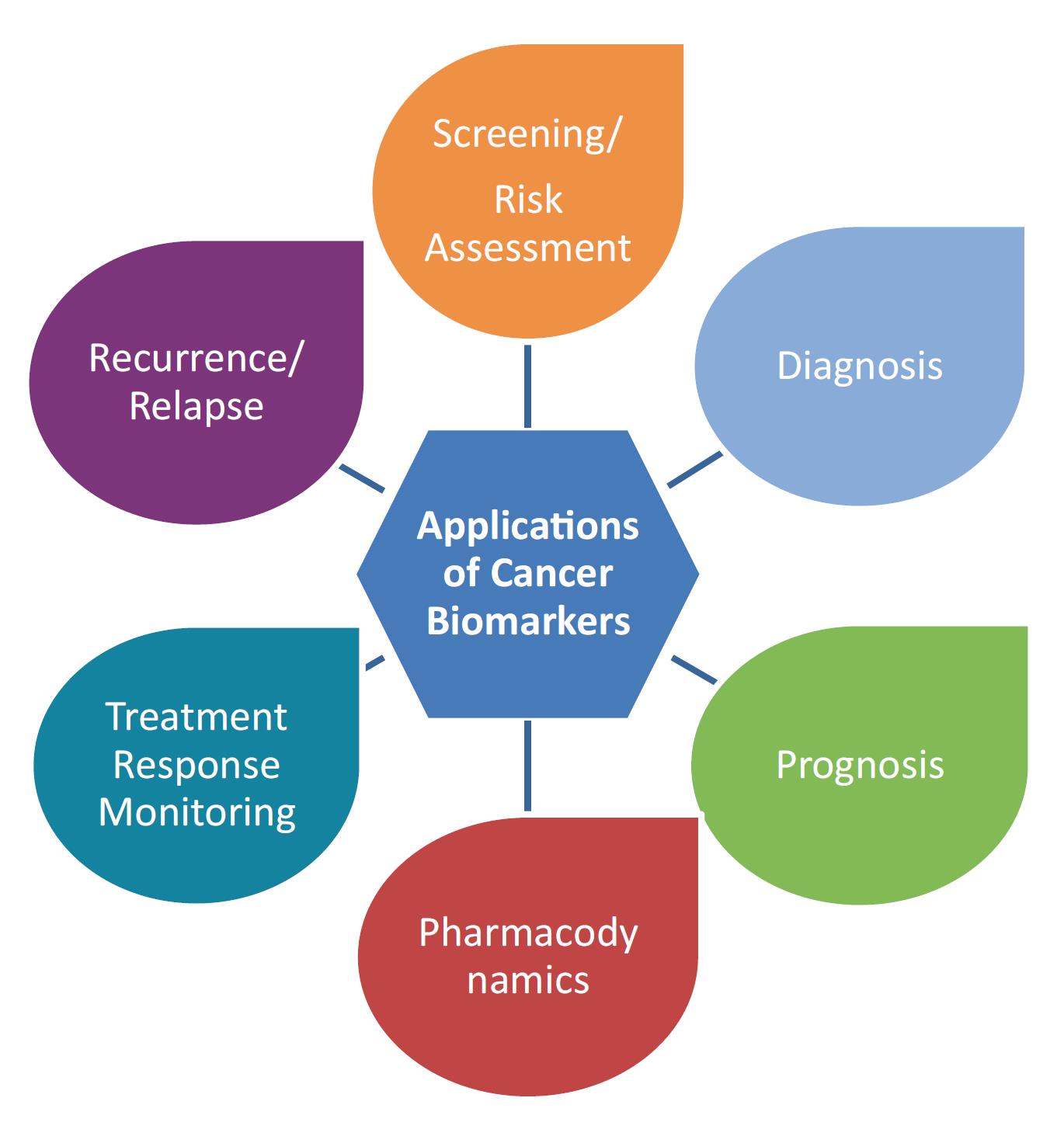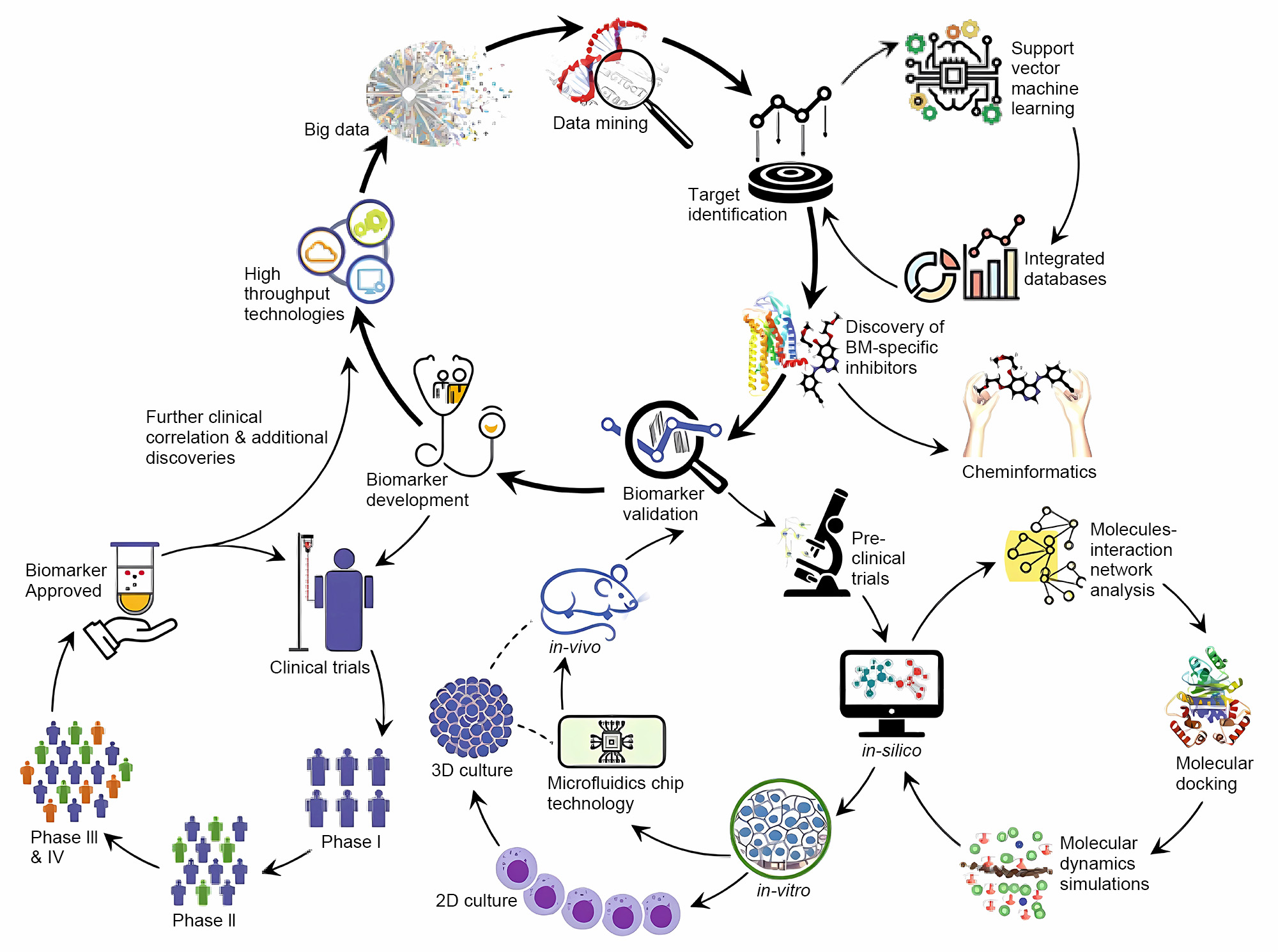

Cancer Biomarkers
In the relentless pursuit of understanding and combatting cancer, biomarkers have emerged as powerful allies in the intricate landscape of oncology. These molecular signposts, aptly named cancer biomarkers, provide critical insights into the presence, behavior, and characteristics of cancer cells. Representing a diverse array of proteins, genetic alterations, or other measurable substances, these biomarkers serve as invaluable indicators, guiding the diagnosis, prognosis, and treatment decisions in various types of cancer. As the field of oncology continues to delve into the molecular intricacies of malignancies, the significance of cancer biomarkers becomes increasingly evident, offering the promise of early detection, personalized treatment strategies, and improved outcomes for individuals grappling with this formidable disease. In this journey towards precision medicine, the exploration of cancer biomarkers stands as a beacon of hope in the ongoing battle against cancer.
What are Cancer Biomarkers?
A biomarker is defined as “a biological molecule found in tissues, blood, or other body fluids that is a sign of normal and abnormal processes, or of a condition or disease” by the National Cancer Institute (NCI), USA. Biomarkers typically distinguish an individual with the disease from one who is not. Biomolecules that can be extracted from tissues, blood, urine, or other bodily fluids and whose presence or changed levels are suggestive of cancer are generally referred to as cancer biomarkers. These macromolecules are referred to as cancer-specific or cancer-associated antigens and are either uniquely expressed or overexpressed. These biomolecules, which can include DNA, RNA, proteins (transcription factors, cell surface receptors, secreted proteins), and sugar compounds, are helpful as cancer biomarkers with a variety of uses in clinical oncology, such as diagnosis, prognosis, and monitoring of response to therapy. An ideal biomarker should not only be unique to cancer but also easily measured and reliable. It should also be present in measurable amounts in the early stages and its amount should be correlated with the tumor load.
 Fig.1 Clinical applications of cancer biomarkers (Pathak, 2023)
Fig.1 Clinical applications of cancer biomarkers (Pathak, 2023)
Classification of Cancer Biomarkers
Cancer biomarkers can be categorized into many groups by different classification methods.
| Category of Cancer Biomarkers | Based on Biomolecules | DNA/RNA Biomarkers |
| Protein/Enzyme Biomarkers | ||
| Hormone & Small Molecular Biomarkers | ||
| Based on Clinical Utility | Risk Assessment/Screening Biomarkers | |
| Prediction Biomarker | ||
| Diagnostic Biomarker | ||
| Prognostic Biomarkers | ||
| Pharmacodynamic Biomarkers | ||
| Biomarkers for Cancer Surveillance and Monitoring Therapy | ||
| Based on Cancer Types | Bladder Cancer Biomarkers | |
| Breast Cancer Biomarkers | ||
| Colorectal Cancer Biomarker | ||
| Gastric Cancer Biomarkers | ||
| Glioma Biomarkers | ||
| Head and Neck Cancer Biomarkers | ||
| Liver Cancer Biomarkers | ||
| Lung Cancer Biomarkers | ||
| Medulloblastoma Biomarkers | ||
| Melanoma Biomarkers | ||
| Osteosarcoma Biomarkers | ||
| Ovarian Cancer Biomarkers | ||
| Pancreatic Cancer Biomarkers | ||
| Prostate Cancer Biomarkers | ||
| Based on Other Criteria | Imaging Biomarkers | |
| Pathological Biomarkers |
Risk Assessment/Screening Biomarkers
A cancer risk susceptibility biomarker helps identify people who are more likely than the overall population to acquire cancer. The aim of a screening biomarker is to identify cancer in otherwise healthy persons who do not exhibit any symptoms associated with cancer. For example, prostate-specific antigen (PSA) is the most often utilized biomarker for cancer screening when it comes to prostate cancer detection. The screening of epithelial ovarian cancer involves the use of transvaginal ultrasonography in conjunction with cancer antigen-125 (CA-125).
Prediction Biomarker
Predictive biomarkers are crucial in evaluating the potential effectiveness of treatments and identifying which patients are more likely to benefit from specific therapies. This assists in making informed decisions about treatment options. Somatic mutations stand out as the most significant predictive biomarkers in the field of clinical oncology. By testing for these biomarkers, doctors can select the most suitable chemotherapeutic drugs for individual patients. Some of the key predictive cancer biomarkers with established clinical significance include epidermal growth factor receptor (EGFR), KRAS, BRAF, human epidermal growth factor receptor 2 (HER2), BCR-ABL, and EML4-ALK.
Diagnostic Biomarker
Diagnostic biomarkers play a crucial role in accurately identifying cancer and determining its point of origin, particularly in cases involving distant metastasis. These biomarkers can emerge at any stage of cancer progression, making them specific to certain tissues, stages, and ages. There is ongoing development of diagnostic biomarkers capable of detecting early-stage cancers and precancerous conditions, which could significantly lower the overall impact of cancer. Several of these biomarkers are already in use in clinical environments. For instance, the bladder tumor antigen (BTA) and nuclear matrix protein-22 (NMP-22) have received approval from the Food and Drug Association (FDA) for their application as diagnostic biomarkers in bladder cancer.
Prognostic Biomarkers
Prognostic biomarkers are employed to assess the severity of a disease and how it reacts to specific treatments. For instance, identifying HPV through various techniques can act as a prognostic biomarker in oral cancer. HPV-positive oral cancer cases often show a higher survival rate than those without HPV. In breast cancer, patients exhibiting increased levels of estrogen receptor (ER) and/or progesterone receptor (PR) tend to have better survival rates. Prognostic biomarkers are also vital for tracking treatment responses, changes in tumor size over time, and potential disease recurrence before it is detectable through imaging. Notable examples include CEA for colorectal cancer, CA-125 for ovarian cancer, and PSA for prostate cancer.
Pharmacodynamic Biomarkers
Pharmacodynamic biomarkers are key in determining the optimal chemotherapy treatment for individual patient conditions. Due to genetic variations, people process medications differently. For some, a reduced ability to metabolize certain drugs can lead to dangerous accumulations in the body. An example of this is seen in individuals with a mutation in the thiopurine methyl transferase (TPMT) gene, responsible for producing the TPMT enzyme. This mutation hinders the metabolism of the leukemia medication mercaptopurine, potentially causing a life-threatening reduction in white blood cell (WBC) count. Consequently, patients with this genetic mutation are typically prescribed a lower dosage of mercaptopurine.
Biomarkers for Cancer Surveillance and Monitoring Therapy
These biomarkers are essential in tracking the effectiveness of a treatment in an individual. A biomarker with clinical relevance typically varies in response to the patient's tumor load. It is more critical to continuously monitor cancer biomarkers during treatment rather than relying on a single measurement. This monitoring helps to determine whether the cancer is progressing, reducing, or remaining stable compared to the initial baseline. Additionally, the recurrence of the disease can often be detected biochemically before it becomes apparent radiologically.
Techniques for Cancer Biomarker Discovery
There are several approaches used in the search for cancer biomarkers, spanning from high-throughput data collection to big data generation, machine learning algorithm application, and biomarker validation in various preclinical and clinical trials. Massive amounts of large data have been produced by high-throughput technology, which data mining is analyzing to produce insightful information from. Data-mining techniques like support vector machine learning and integrated database analysis are used to identify new targets that eventually develop into cancer biomarkers. Meanwhile, efforts to find potential biomarker-specific inhibitors are underway, using cheminformatics and other computational methods to uncover possible functional groups that may have a binding affinity for the biomarkers that have been identified. Through preclinical research using in vitro, in silico, microfluidics, and in vivo methodologies, the putative cancer biomarker is being validated. This results in the successful approval of the cancer biomarker for use in cancer clinics after a thorough clinical trial process that validates the biomarker's developmental validity in the human population.
 Fig.2 Technologies for identification and validation of cancer biomarkers (Shehzad, 2022)
Fig.2 Technologies for identification and validation of cancer biomarkers (Shehzad, 2022)
Methods for Cancer Biomarker Detection
Cancer biomarkers are vital indicators used for detecting and managing cancer effectively. They play a crucial role in the early diagnosis, prognosis, and monitoring of cancer treatment. The detection of these biomarkers involves various advanced methods, each tailored to identify specific types of biomarkers with high sensitivity and specificity. Techniques like immunohistochemistry, liquid biopsy, and mass spectrometry have revolutionized the field, offering insights into the molecular and genetic underpinnings of cancer. This allows for more personalized and targeted therapies, ultimately improving patient outcomes.
Table 1 Comparison of the methods used for biomarker detection
| Method | Basic Principle | Advantages | Limitations |
| Immunohistochemistry(IHC) | Uses antibodies to detect specific proteins in tissue sections. | Localizes biomarkers within tissue, cost-effective. | Interpretation variability, limited quantification. |
| Enzyme-Linked Immunosorbent Assay (ELISA) | Utilizes antibodies to detect and quantify proteins. | High sensitivity and specificity, suitable for large sample numbers. | Quality of antibodies affects performance, potential cross-reactivity. |
| Western Blotting | Separates proteins by gel electrophoresis and detects with antibodies. | Provides protein size and expression levels. | Semi-quantitative, time-consuming, requires enough protein. |
| Polymerase Chain Reaction (PCR) | Amplifies DNA sequences to detect gene mutations or expressions. | Highly sensitive and specific, detects minute DNA quantities. | Requires precise temperature control, prone to contamination. |
| Next-Generation Sequencing (NGS) | Sequences large amounts of DNA rapidly and simultaneously. | Comprehensive genomic information, detects multiple biomarkers in one test. | High cost, complex data analysis. |
| Liquid Biopsy | Detects biomarkers in non-solid biological tissue like blood. | Minimally invasive, allows for real-time monitoring. | Lower sensitivity than tissue biopsies, still developing for some cancers. |
| Mass Spectrometry | Measures mass-to-charge ratio of ions to identify molecules. | High specificity and sensitivity, wide range molecule analysis. | Expensive equipment, complex sample preparation. |
| Fluorescence in situ Hybridization (FISH) | Uses fluorescent probes binding to specific DNA sequences. | Visualizes genetic abnormalities, useful for chromosomal translocations. | Specialized equipment needed, limited probe availability. |
| Microarrays | Uses DNA segments grid to analyze gene expressions. | Simultaneous analysis of thousands of genes. | Can be expensive, complex data analysis, variable results. |
| Flow Cytometry | Measures cells or particles' characteristics as they pass through a laser beam. | Analyzes multiple parameters simultaneously, high throughput. | Requires specific antibodies, expensive equipment. |
| Reverse Phase Protein Array (RPPA) | Measures protein expression using high-throughput approach. | Analyzes many samples simultaneously, small sample amounts needed. | Limited to available antibodies, semi-quantitative. |
| Surface Plasmon Resonance (SPR) | Measures refractive index changes near a sensor surface for biomolecular interactions. | Label-free detection, real-time analysis, high sensitivity. | Expensive equipment, complex data interpretation. |
| Microfluidics | Manipulates small fluid volumes in microscale channels. | Low sample and reagent volumes, high-throughput, integrable with other technologies. | Expensive fabrication, requires specialized equipment. |
| Tissue Microarrays | Consolidates multiple tissue samples into a representative block. | High-throughput analysis, conserves tissue samples. | Tissue heterogeneity can cause variable results, careful selection needed. |
| Single Cell Analysis | Analyzes biomarkers at the single-cell level. | High-resolution data, reveals cell variability. | Technically challenging, expensive, sophisticated analysis tools required. |
| Nano-particle Based Assays | Uses nanoparticles as probes for biomolecule detection. | High sensitivity, designed for multiplexing, useful for in vivo imaging. | Non-specific binding issues, potential nanoparticle toxicity. |
- Pathak, Sujata, and Asrar Alam. "Role of Biomarkers in Cancer Prevention and Therapy." Toxicology and Human Health: Environmental Exposures and Biomarkers. Singapore: Springer Nature Singapore, 2023. 179-195.
- Javed, Aneela, et al. "Technologies for Identification and Validation of Cancer Biomarkers." Cancer Biomarkers in Diagnosis and Therapeutics. Singapore: Springer Nature Singapore, 2022. 27-64.
For research use only. Not intended for any clinical use.
This site is protected by reCAPTCHA and the Google Privacy Policy and Terms of Service apply.
